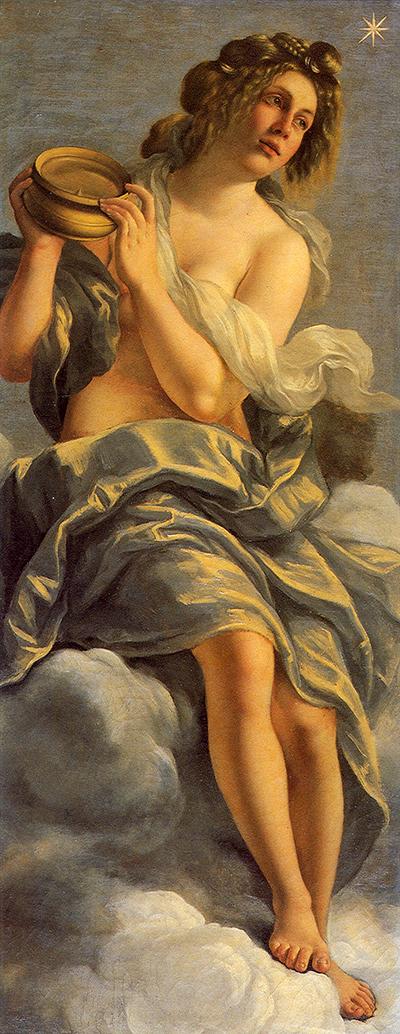The painting, Allegory of Inclination, depicts a nude female figure representing inborn creative ability. The figure is seated on a cloud and she is holding a compass and is guided by the star of Magi above her on the right topmost part of the paint.
Her hair is attractively away from her beautiful face to depict the important work with far-sighted vision. Allegory of Inclination has a rich mix of colors and is thought-provoking to look at. The lightning can be assumed to be from a natural source since the settings are in open space. There is a complete absence of extreme shading probably depicting angelic purity. In her work, the Allegory of Inclination 1615 to 1617 , its an oil on canvas painting on the ceiling of the Galleria in the Casa Buonarroti in Florence. It was commissioned by Michelangelo Buonarroti the younger as part of a series of paintings to glorify the life of his great uncle.
Artemisia Gentileschi was an Italian Baroque painter who majored in the dramatic style of Caravaggio. She was the first woman to attain the membership of Accademia di Arte del Disegno in Florence and had clientele world over. Artemisia was introduced into painting by her father Orazio Gentileschi and she showed alot of potential and talent compared to her brothers. Because her father's style took inspiration from Caravaggio, her style, as a result, was heavily influenced by him. Another painter, Agostino Tassi, had some influence on Artemisia as he was her private tutor.
Among the people Artemisia influenced were her daughter, Prudentia, whom she trained personally although up to date, no work related to her is known. She also had a professional relationship with Vouet and would influence one another in terms of style and their learnings from Caravaggio's style. Her work also influenced Massimo Stanzione's use of color as seen in his Assumption of the Virgin 1630. Her life also influenced writers such as George Eliot to produce a novel around her. The more vivid use of Artemisia's story featured in Anna Banti's book Artemisia. She is among the women captured in The Dinner Party, a work of installationa by Judy Chicago exhibited in 1979.
Her work, Judith Beheading Holofernes, was included to in Wendy Wasserstein's play The Heidi Chronicles 1988. Also, Sally Clark, a Canadian playwright wrote several stage plays based on the incidents that followed the rape of Artemisia and her trail, Life Without Instruction. Other works by Artemisia include Bathsheba, Judith, and Her Maidservant, The Virgin nursing the child, annunciation, and Clio: the Muse of History.




